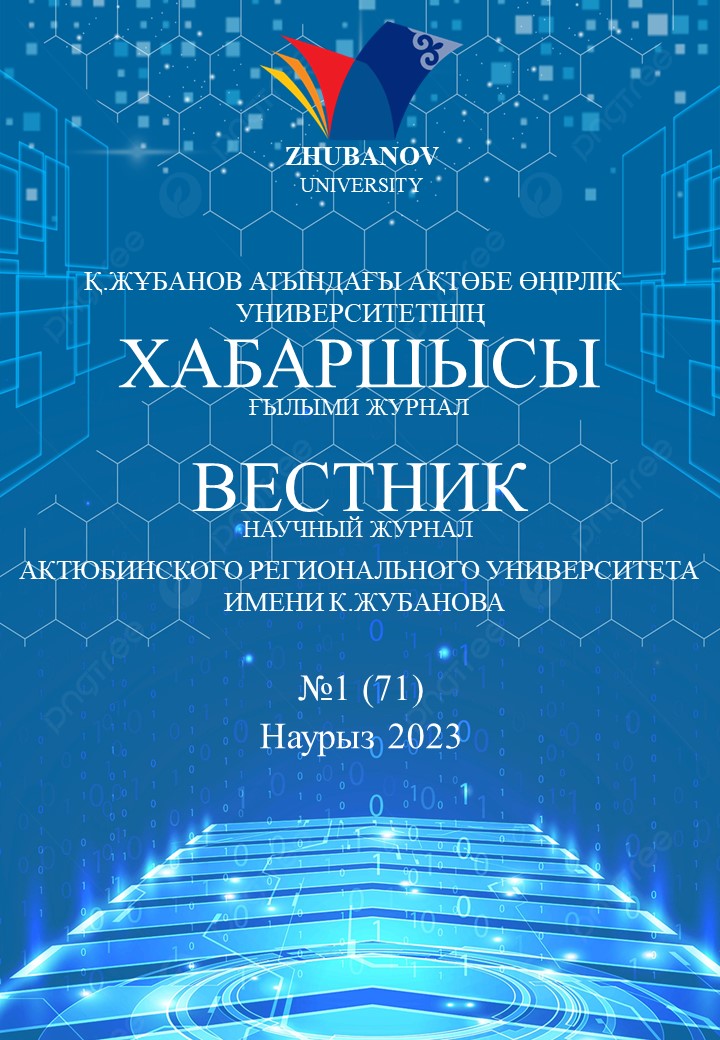Мақала феррохром және ферросилиций өндірісінің дисперсті қалдықтарын кәдеге жаратуға арналған. Ферроқорытпа зауыттарында ферроқорытпаларды ұсақтау кезінде шаңның пайда болуы және жиналуы туралы ақпарат берілген және мұндай шаңды кәдеге жаратудың белгілі әдістерінің кемшіліктері көрсетілген. ӨЗЖТС синтезінің салыстырмалы технологиялары ұсынылған. Бастапқы реагенттерді қолдануына байланысты металлургиялық ӨЗЖТС процестері газсыз, газ сіңіретін және газ бөлетін процестерге бөлінеді. Сонымен қатар, оларды іске асыру кезінде жану режимдері айтарлықтай ерекшеленеді. Металлургиялық ӨЗЖТС процесін жүзеге асыру үшін Fe-Cr-N және Fe-Si-N жүйелері үшін адиабаталық температура есептелді, мұнда адиабаталық жану температурасын анықтаудың негізгі шарты бастапқы заттардың температурасындағы To және соңғы өнімдердің температурасындағы Tад энтальпияларының теңдігі болып табылады. Жеке заттар мен күрделі қосылыстардың термодинамикалық сипаттамаларын іздеу үшін HSC Chemistry 6.0 бағдарламалық кешені пайдаланылды. Процестің максималды температурасын анықтау және синтез өнімдерінің құрамын есептеу мүмкіндігі көрсетілген. Хром нитриті мен кремний нитридінің адиабаталық жану температурасы есептелді, содан кейін өнімдегі темір мөлшері 10-50% болғанда. Fe-Cr-N және Fe-Si-N жүйелері үшін максималды адиабаталық температура Tад = 2060 °C және сәйкесінше Tад = 4200 °C болғаны анықталды. Сонымен қатар жүйедегі темір концентрациясының жоғарылауы тұрақты силицидтердің түзілуіне байланысты қоспалардың адиабаттық жану температурасының төмендеуіне ықпал етеді
- Гасик М.И., Лякишев Н.П., Емлин Б.И. Теория и технология производства ферросплавов. – М.: Металлургия, 1988. – 784 с.
- Павлов С.В., Снитко Ю.П., Плюхин С.Б. Отходы и выбросы при производстве ферросилиция / Электрометаллургия. 2001. №4. - С. 22-28.
- Канаев Ю.П., Бондарев А.А., Брыляков В.И. и др. Освоение переплава ферросилициевой мелочи с получением чистых марок ферросилиция и комплексных модификаторов / Сталь. 2000. №10. - С. 67-70.
- Зиатдинов М.Х., Шатохин И.М., Леонтьев Л.И. СВС технология композиционных ферросплавов. Часть I. Металлургический СВС процесс. Синтез нитридов феррованадия и феррохрома / Известия высших учебных заведений. Черная металлургия. 2018. Т.61. №5. С. 339-346.
- Мержанов А.В. Мукасьян А.С. Твердопламенное горение. – М.: ТОРУС ПРЕСС, 2007. – 356 с.
- Мержанов А.Г. Научные основы, достижения и перспективы развития процессов твердопламенного горения / Известия РАН. Серия химическая. 1997. Т. 46. №1. - С. 7-31.
- Мизин В.Г., Чирков Н.А., Игнатьев В.С. и др. Ферросплавы. Справочные издание. – М.: Металлургия, 1988. – 784 с.
- Подболотов К.Б. Дятлова Е.М., Хина Б.Б. Термодинамический анализ процессов самораспространяющегося высокотемпературного синтеза керамических материалов / Труды БГТУ. 2011. №3. - С. 134-136.

